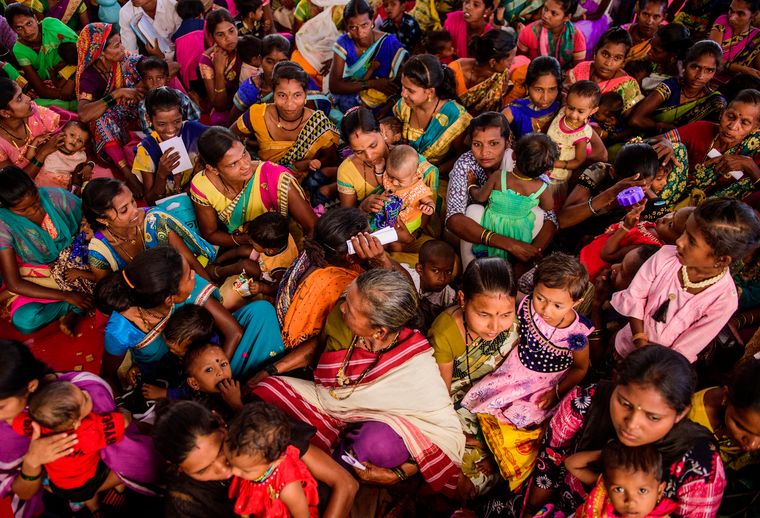Jnanesh is seven years old, but he weighs just 10kg. As his contemporaries run around and play games, he is so frail that he cannot even sit up on his bed. His body is emaciated; his stomach is shrunken and ribs poke out through his skin. Jnanesh can barely open his eyes when his mother runs her fingers through his hair. He is so weak that he cannot even cry out in anguish.
Jnanesh is one among thousands of children suffering from malnutrition in Maharashtra’s Palghar district. Between 2016 and 2018, more than 1,100 malnourished children in Palghar died. According to a recent study published in the journal PLOS One, three of every five tribal children in the district are stunted, and more than half of them are underweight. A Children’s Day medical camp organised at Jawhar on November 14 this year saw hundreds of malnourished children from tribal hamlets taking part.
Palghar is not a remote district, though. It is just 100km from Mumbai, and is one of the districts through which the proposed bullet train between Ahmedabad and Mumbai will run. The bullet train project will cost Rs2,00,000 crore; but Maharashtra, despite being India’s richest state, spends less than Rs15,000 crore every year on public health. The Shiv Sena-led Maharashtra Vikas Aghadi government is now said to be wondering if the money earmarked for the bullet train project could be spent on improving the lives of people in Palghar.
Tribals and farmers make up a majority of the population in Palghar. They mainly produce ragi and wheat, but the hilly terrain and recurrent droughts have kept productivity and incomes low.
I visited a tribal village during harvest. Most of the men were in Mumbai in search of work, so the women and children toiled in the fields. I saw a seven-year-old braving the sun with her mother and grandmother; her tender hands helping them reap the harvest. Apparently, there is not enough money to hire a farmhand.
Malnutrition is just a symptom of this larger disease—poverty. Lack of job opportunities, low wages and shortage of drinking water have created a situation that contributes to the death of children. Studies have indicated that malnutrition in Palghar is more prevalent among boys than girls. Even though shortage of food and dietary imbalances have been found to be the culprits, the authorities continue to be in denial. Official statistics attribute the deaths to lung- and heart-related diseases.
The crisis in Palghar had first attracted attention in 2006, when 718 malnourished children died. The dance of death so shocked the government and health care volunteers that they rushed in to find solutions. A slew of measures were then announced to address the problem, but there has not been any study on whether the measures are actually working.
Apparently, they are not; hundreds of malnourished children in Palghar continue to die every year. Those who manage to survive, like Jnanesh, are barely there. Some of them, if grew any thinner, would just disappear.




